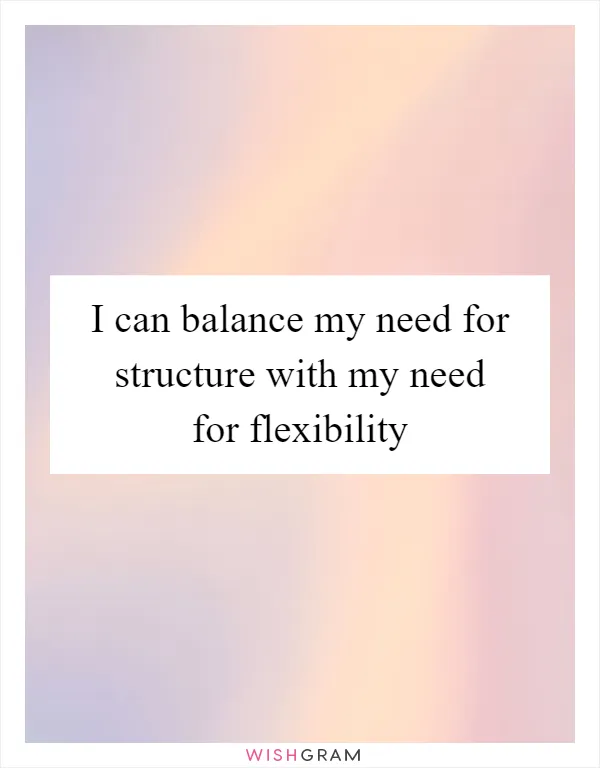I can balance my need for structure with my need for flexibility
Finding balance in life can be a challenge. We all have different needs and desires, and sometimes it can feel like those needs are in conflict with each other. For example, some people thrive on structure and routine, while others crave flexibility and spontaneity. But what if I told you that you can have both? That you can balance your need for structure with your need for flexibility?
It's true. With the right mindset and approach, you can create a life that gives you the best of both worlds. The key is to recognize that these needs are not mutually exclusive. In fact, they can complement each other quite nicely.
Let's start with structure. Having a routine and a plan can be incredibly helpful for staying organized and productive. It can also provide a sense of stability and security, which can be comforting in an uncertain world. However, too much structure can also be stifling. It can leave you feeling trapped and bored, and can prevent you from exploring new opportunities and experiences.
On the other hand, flexibility can be liberating. It allows you to adapt to changing circumstances and take advantage of unexpected opportunities. It can also help you stay open-minded and creative. However, too much flexibility can also be overwhelming. It can leave you feeling scattered and disorganized, and can make it difficult to achieve your goals.
So how do you find the right balance? It starts with understanding your own needs and preferences. What kind of structure do you need to feel productive and organized? What kind of flexibility do you need to feel free and creative? Once you have a clear sense of these needs, you can start to experiment with different approaches to find what works best for you.
One strategy is to create a flexible structure. This means setting up a routine or schedule that allows for some wiggle room. For example, you might have a set time each day for work or exercise, but allow yourself to be flexible about the specific tasks you do during that time. Or you might have a general plan for the week, but leave some open space for spontaneous activities or relaxation.
Another strategy is to practice mindfulness. This means being present and aware of your thoughts and feelings in the moment. When you're mindful, you can tune in to your own needs and adjust your approach accordingly. For example, if you're feeling overwhelmed and need some structure, you can create a to-do list or schedule for the day. If you're feeling restless and need some flexibility, you can take a break and
